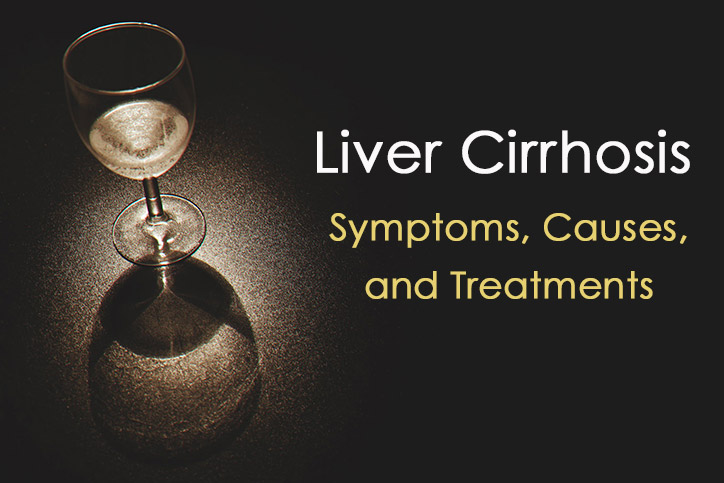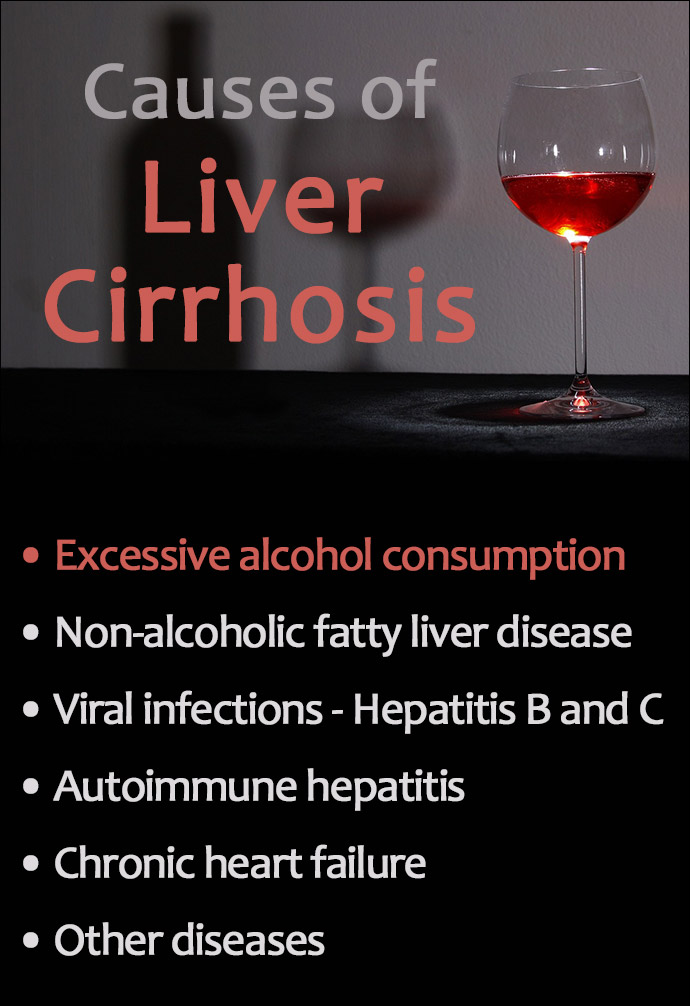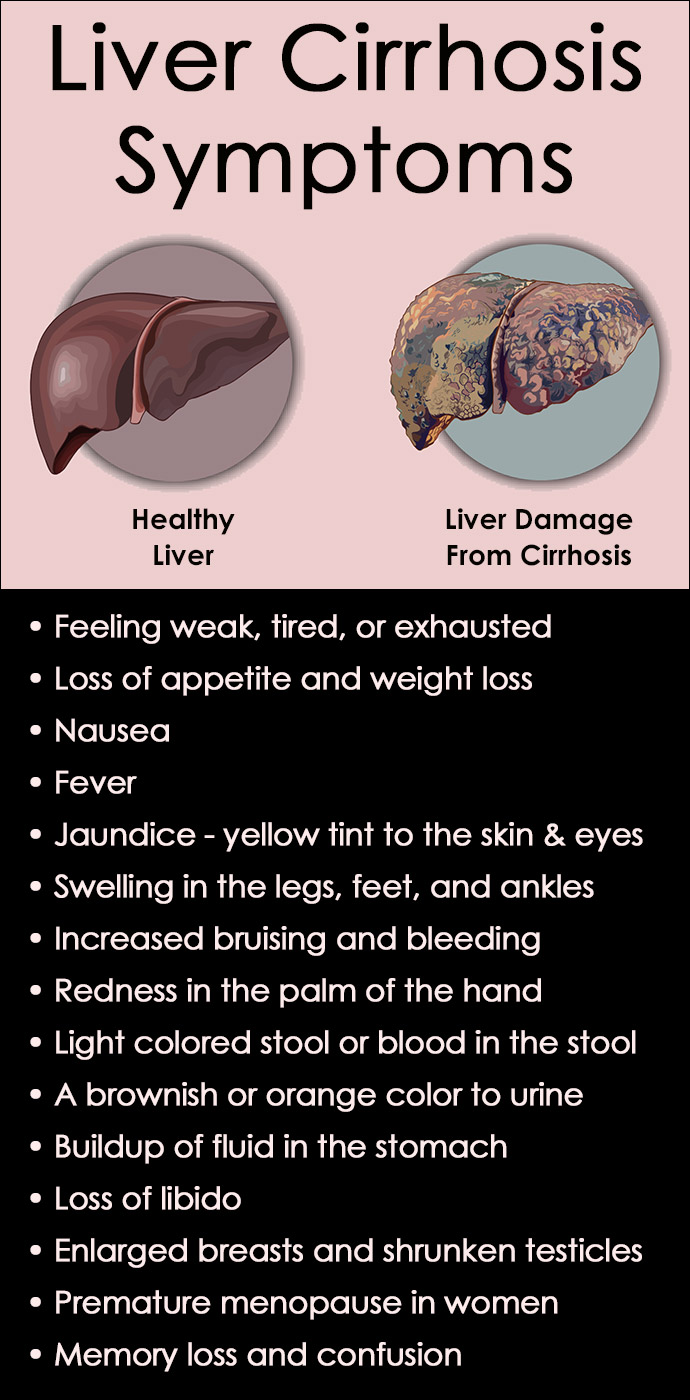Table of Contents
Liver Cirrhosis occurs when unhealthy scar tissue replaces healthy tissue due to late-stage liver disease.
There are several causes of liver cirrhosis, including alcohol use disorder, fatty-liver disease, and hepatitis. Cirrhosis is not curable and often causes permanent damage to the organ that can be fatal.
The condition is most common in adults between the ages of 45 and 54, with research suggesting that about 1 in 400 adults in the United States have cirrhosis, according to the National Institute of Diabetes and Digestive and Kidney Diseases.
Cirrhosis of the Liver Definition
Cirrhosis of the liver is defined as the buildup of scar tissue on the liver that prevents the organ from functioning properly.
A diseased liver leads to cell death and inflammation, which is then followed by cell repair. It is the process during the repair phase that leads to scarring on the liver.
The accumulation of scar tissue restricts the flow of blood through the liver and slows the organ’s ability to process nutrients, drugs, hormones, and natural toxins.
The buildup of scar tissue also causes the liver to lose its ability to create proteins and other substances needed for healthy functioning.
It’s important to understand that cirrhosis is the result of late-stage liver disease. So, by the time a person receives a diagnosis of cirrhosis, the liver has not been healthy for a significant amount of time.
Liver Cirrhosis Causes
There are several different causes of cirrhosis of the liver, but one of the most common by a wide margin is chronic, long-term alcohol abuse.
Some data suggests that the risk of liver damage increases with any alcohol consumption for women, and for men who consume more than one alcoholic drink a day.
Cirrhosis is one of negative effects of alcohol that results from prolonged or excessive drinking.
Other causes include:
- Nonalcoholic fatty liver disease (NAFLD), which is associated with obesity and diabetes is sometimes referred to as nonalcoholic steatohepatitis (NASH) or metabolic dysfunction-associated steatotic liver disease (MASLD)
- Chronic viral infections, such as hepatitis B and hepatitis C
- Autoimmune hepatitis can cause liver damage when the body’s immune system attacks healthy liver tissue
- Chronic heart failure can damage the organ by causing fluid to back up in the liver
There are other diseases that can damage the liver and ultimately lead to cirrhosis, but the changes in the liver that lead to cirrhosis are gradual.
When liver cells start to die from a disease, the scar tissue that replaces those cells leads to cirrhosis.
To complicate the issue, the symptoms can easily be mistaken for dozens of other illnesses.
Cirrhosis of the Liver Symptoms
In the early stages of liver cirrhosis, a person might not exhibit any symptoms. But as organ function becomes worse, other recognizable symptoms will start to appear.
It is worth noting that many of the symptoms can be painful and lead to chronic, lasting discomfort.
Early symptoms include:
- Feeling weak, tired, or generally exhausted
- Loss of appetite, leading to unexpected weight loss
- Nausea
- Fever
Advanced symptoms may include:
- Jaundice, which is a yellow tint to the skin and the whites of the eyes
- Swelling in the legs, feet, and ankles
- Increased bruising and bleeding
- Redness in the palm of the hand or spider-like blood vessels that surround red spots on the skin
- Light colored stool or blood in the stool
- A brownish or orange color to urine
- Buildup of fluid in the stomach
- Loss of libido, enlarged breasts, and shrunken testicles in men
- Premature menopause in women
- Memory loss, difficulty concentrating, confusion, and personality changes
The condition can also lead to dozens of other complications, and life-threatening problems such as liver failure, malnutrition, and serious infection.
In some cases, these complications are the first signs that appear when a person is suffering from cirrhosis symptoms.
Liver Cirrhosis Treatment
It’s important to understand there are 3 stages of alcoholic liver disease, and anyone who is diagnosed with cirrhosis is already in the last stage.
While there is no cure, liver cirrhosis treatment approaches will depend on the underlying causes that lead to the condition.
Usually, the goal is to slow further liver damage, prevent complications, and treat the general symptoms caused by the condition so a person is more comfortable.
For those battling alcohol-related liver disease, seeking professional alcohol treatment to stop drinking is one of the very first steps to take.
It is imperative that a person quits the use of alcohol, and only then can physicians begin to address other symptoms and complications caused by cirrhosis.
For cirrhosis caused by Hepatitis B or Hepatitis C, there are several approved antiviral medications for treatment.
Individuals diagnosed with nonalcoholic fatty liver disease will be advised to start a weight management program, get regular exercise, and follow a healthy, well-balanced diet.
While it’s not possible to eliminate the permanent damage caused by cirrhosis, some treatments may delay or stop the progression of scar tissue. This can help reduce complications associated with scarring of the liver.
Understanding that excessive or prolonged alcohol use can lead to liver damage is a motivating factor for many people to quit drinking.
It can be difficult for anyone with a physiological dependence on alcohol to stop drinking without professional help. But if liver damage has not occurred yet, this is a positive way to prevent it from happening in the future.
Any form of addiction treatment should begin with an alcohol detox program to comfortably overcome the withdrawal process.
Once detox has been completed, treatment for alcohol addiction is an effective way to ensure a successful recovery.
Photo Credit: Liver damage image by myUpchar
Frequently Asked Questions
What is cirrhosis of the liver?
Cirrhosis of the liver is a chronic condition that occurs when healthy tissue is replaced by scar tissue that interferes with proper functioning of the liver.
Cirrhosis can be caused by excessive alcohol use, hepatitis, nonalcoholic fatty liver disease, or metabolic issues.
It is a late-stage liver disease that can take years to develop.
Is cirrhosis of the liver hereditary?
Liver cirrhosis is not directly hereditary, although conditions such as Wilson’s disease, cystic fibrosis, and hemochromatosis are genetic and may lead to liver damage and cirrhosis.
A family history of alcoholism or liver disease can increase a person’s risk or predispose them of developing cirrhosis from liver damage.
How do you test for liver cirrhosis?
Liver cirrhosis is often diagnosed through a combination of imaging and blood tests, and a liver biopsy if necessary.
Common tests include:
- Comprehensive blood count
- Liver function blood test
- Synthetic function blood test
- Ultrasound imaging test
- CT scan
- MRI
- NAFLD fibrosis score test
- Fibrotest blood marker test
- Liver biopsy
Can cirrhosis of the liver be reversed?
A healthy liver is sometimes able to regenerate after certain types of injuries, although cirrhosis is usually thought to be permanent, especially in the later stages.
However, in extremely mild cases, or if diagnosed in the very early stages before scarring becomes too advanced, it may be possible to reverse the effects depending on the cause.
New advances in regenerative medicine, like stem cell therapy, show promise for the future of reversing liver damage.
What are the final stages of cirrhosis of the liver?
The final stages of liver cirrhosis are known as end-stage liver disease and will require a liver transplant if a person is to survive.
This stage causes health complications and discomfort that include:
- Swelling in the extremities
- Extreme jaundice
- Bruising and bleeding
- Fluid and bloating in the abdomen
- Physical pain and cramps
- Difficulty breathing
- Trouble sleeping
- Organ failure
How long can you live after being diagnosed with cirrhosis of the liver?
The life expectancy for a person diagnosed with cirrhosis of the liver will depend on the stage of cirrhosis, the underlying causes, age and health of the individual, and response to treatment.
If diagnosed in the early stages, a person in otherwise good health can live for 10 to 15 years or longer if the cause of cirrhosis is eliminated and treatment is effective.
The life expectancy for a person with advanced stage liver cirrhosis may only be 1 to 3 years unless they receive a transplant.





